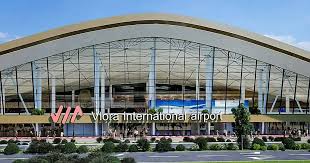The development of Vlorë International Airport (Aeroporti Ndërkombëtar i Vlorës) marks a significant step in Albania’s growing ambitions to strengthen its infrastructure, tourism, and regional connectivity. Positioned in the heart of southern Albania, this airport promises to transform the country’s transportation landscape and enhance access to one of the most picturesque coastal regions of the Mediterranean.
Origins of the Project
The idea for a new airport in Vlorë was first publicly introduced in the early 2010s, but it gained serious momentum around 2018, when the Albanian government prioritized the project as part of its broader strategy to decentralize air traffic from Tirana and stimulate the southern economy. The need for an international airport in southern Albania became especially apparent given the region’s growing popularity among tourists, coupled with limited access to air travel infrastructure.
Planning and Concession
In March 2021, after several rounds of delays and revisions, the Albanian government signed a concession agreement with an international consortium composed of Mabetex Group, an engineering and construction firm led by Kosovar businessman Behgjet Pacolli, and other partners. The total investment was estimated at around €104 million.
The airport was planned to be built in the Akërni Plain, approximately 10 km north of Vlorë city, close to the Narta Lagoon. The project also includes road infrastructure, a terminal building, a runway long enough to accommodate wide-body aircraft, and facilities capable of handling over 1 million passengers per year initially, with potential for expansion.
Environmental and Legal Challenges
One of the most debated aspects of the Vlorë Airport project has been its environmental impact. The Narta Lagoon is a protected area and an important stopover for migratory birds, including flamingos. Several environmental organizations, both local and international — including BirdLife International and the Bern Convention — raised concerns and urged the Albanian government to relocate the airport or revise the project to mitigate ecological damage.
Despite these objections, the Albanian authorities maintained that the project would be implemented with due regard for environmental standards and economic necessity. Construction eventually proceeded after assessments and legal hurdles were addressed.
Construction Progress
Construction officially began in mid-2022, with heavy machinery mobilized to the site and preparatory works completed by the end of that year. The airport is designed to meet international standards, with a 3.2 km runway, a modern terminal, and cargo facilities. Its strategic location also makes it a potential hub for both civilian and military operations.
By early 2024, major structural components such as the runway, control tower, and terminal foundation had taken shape. According to statements from government officials and the contracting consortium, the project was proceeding on schedule.
Current Stage (as of 2025)
As of May 2025, Vlorë International Airport is nearing completion, with over 80% of construction finalized. The runway has been fully paved, while the passenger terminal and ancillary facilities are in the final phase of internal work and equipment installation. Test flights and operational trials are expected to begin in late summer 2025, with a soft opening projected by the end of the year.
The airport is anticipated to be fully operational by early 2026, coinciding with the start of the summer tourism season. Several low-cost and charter airlines have reportedly expressed interest in operating flights to Vlorë, especially from Italy, Germany, Switzerland, and the UK — markets with large Albanian diasporas and strong tourism ties.
Impact and Future Outlook
The opening of Vlorë International Airport is expected to:
- Reduce pressure on Tirana International Airport (TIA)
- Boost tourism along the Albanian Riviera
- Create jobs and stimulate the local economy
- Enhance regional development in southern Albania
- Improve connectivity to nearby regions such as Sarandë, Himara, and even northern Greece
With its development, Albania is not only enhancing its air infrastructure but also signaling its growing ambition as a key tourism and investment destination in the Balkans.




